
Compare Skis

Atomic Backland Series: Review and Comparison
February 15, 2022
By Marius Bulota
Atomic Backland Series Overview
The Atomic Backland is a lightweight backcountry (touring) series of skis. There are a few sub-categories ranging from super lightweight skimo to super float 117mm underfoot, and a full progression of underfoot width options. Overall, there are 16 models of Atomic Backland that are offered in various lengths .
The first thing I noticed when we measured the Atomic Backland is how light weight they are. Just picking up the skis from the shelf is astonishing. In this series, Atomic uses constructions that produces very light skis that still offer interesting stiffness levels. Accordingly, the surface - to - weight ratio , which we like to use to describe backcountry skis is one of the highest we have measured so far! This means that no matter what model or length you choose, they will have an extremely low weight for skis of similar surface area.
Atomic presents four sub-categories, namely the Unisex (or men), the Women specific, and two very lightweight options under the SL and UL . Our measurements also show that the line-up of Unisex and Women can be broken down into two different orientations based on their shapes. The shift happens around the Backland 100. Anything below a waist width of 100 mm has it's shape adapted to firm snow skiing, while anything above 100 mm is adapted for powde r skiing with features like increased rocker.
The surface-to-weight ratios across the model we measured are very consistent at about 1,3 cm²/g in the 180cm lengths, except for the Backland 100 that has an impressive surface-to-weight ratio of 1,44 cm²/g . This means that even if the Backland 100 is larger and has more surface area compared to the Backland 95, but is also lighter! It is a bit of an outlier in this series, so be aware that they will provide different on-snow feels.
As for many light skis, their bending and torsional stiffness levels are lower than other similarly shaped skis. However, we found that for their surface-to-weight ratio, the bending stiffness levels are typically medium-high and the torsional stiffness levels are typically high.
Looking at the Women specific skis, our measurements of the Backland 100 and the Backland 98 W in 164cm show that that are both practically identical for every aspec t we consider (see detailed comparison here ) . They have the same shapes, same weight, same bending stiffness and same torsional stiffness.
What are the Atomic Backland options available?
According to Atomic catalog, there are 16 models of Backland skis in 21/22 and those come in different lengths. At the time of writing, we had 35 Backland skis measured and available for you to compare in our online Ski Comparator . Of those, 15 are from season 21/22. The table below summarizes the options available in 21/22 catalog.
Comparing The Atomic Backland Popular Options
Our comment and observations below are based on the 35 Backland skis we have measured. We picked four models of interest (Backland 86 SL, Backland 95, Backland 100 and Backland 107) and compared them for similar lengths. We use lengths around 180 cm in this case. This is important as many properties change with ski length. Our detailed measurement are available here . You can use our database to compare other lengths and models.
Backland 86 SL
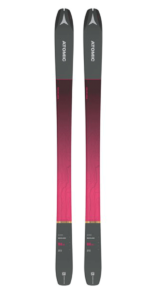
The Atomic Backland 86 SL is not a skimo, but at 1300 grams, it can definitely be considered Super Light! The rockers and tapers are shorter, which will provide more support and stability on hard surface. It also provides more bending stiffness, which is interesting for skiing faster on harder snow.
If you want a ski mainly for touring and would use it very occasionally on the resort, this might be an interesting option. However, the other way around may not be the best option. There are better resort oriented options that would also do well occasionally backcountry skiing.
Backland 95
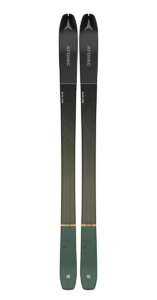
Like the 86 SL, the Backland 95 also has a subtle rockers and a long sidecut length, for more stability on hard surfaces. With 95 mm waist, it can float but is also narrow enough to handle harder surface. The radius is slightly shorter, so more reactive. It would be the right choice for the skiers who would prefer a one-ski quiver for up-hilling, and go touring no matter the snow conditions (crust, hard packed, powder...).
Be aware that even if it's close to the Backland 100 in waist width, it is a different beast.
Backland 100
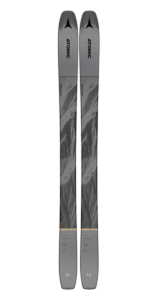
The Backland 100 is considerably different when compared to the Backland 95, despite only a 5 mm waist width increase. Its design show many powder oriented features like longer rockers and tapers. This makes this skis more playful and easier to pivot in soft snow and uneven terrain (soft bumps). It would not perform has well on hard surfaces. The choice between the 95 and the 100 really depends on the main conditions you anticipate to ski the most. If you go touring no matter the the snow condition, the 95 would be better. If you go touring when the snow is soft and deep, the 100 is a better option.
Backland 107
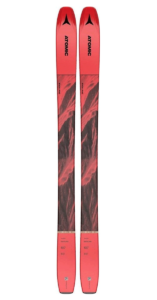
The Backland 107 is clearly powder oriented with a bit more of a freeride flavour. It has the highest rockers and tapers. It is also 300 grams heavier than the 100. With this extra weight also comes about 20% more torsional stiffness, which would be useful for charging even when the snow is not super fluffy. This options may be more interesting for skiers that want more float and more responsiveness, due to the extra torsional stiffness.
The Atomic Backland evolution in time
Comparing the backland 100 and 102 from 2019 to 2022.
Yes, there has been a few changes over the years. See our detailed comparison between the 19/20 Backland 102 and the 20/21 and 21/22 Backland 100, in 172 cm. The main differences observed are:
- The weight was significantly reduced over the years, by as much as 12% to 14% per year ! This is quite an engineering achievement, considering that during this same period, the bending stiffness level increased a bit and the torsional stiffness increased significantly !
- Accordingly, the surface-to-weight ratio went from 1,17cm²/g in 19/20, to 1,3cm²/g in 20/21 and now 1,49cm²/g in 21/22 for those specific skis.
- The radius stays between 17m to 18m for this specific length.
- The running length is about the same for all three skis.
- The tail height has decreased significantly from the 19/20 version.
COMPARE ALPINE SKIS
What skis are similar to the backland series.
There are similar options to the Atomic Backland series. However, you will notice from the comparisons below that similar waist width along with similar surface to weight does not mean that they will ski the same. Lets have a look at a few models form other brands such as DPS, Blizzard, Dynafit, Dynastar, Fischer, K2, Line, Rossignol and Völkl. The table below is a comparisons summary we have made.
Atomic Backland review conclusions
The Atomic Backland has some impressive specifications as a backcountry (touring) ski. It clearly scores well on the surface to weight ratio, no matter which size. Up to a waist width of 95, it is targeted for firm snow. Above that, the shape is different and clearly targets more playful feelings in soft snow. There are no significant differences between the Women and the Unisex models. There are many other light skis out there, but the Backland remains a light ski with above average levels of bending and torsional stiffness. Over the past years, while the weight has been decreasing, Atomic maintained or increased the stiffness levels.
affiliation & relations with shops
To help us further develop our measuring technology and our Ski Comparator Application , we have integrated some affiliate links and we also refer to shops who have welcomed us to measure the skis they sell . We may receive indirect compensation from shops if you use an affiliate link either from our website or our Ski Comparator Application . We may also refer skiers to shops that support our project by giving us access to measure skis. We thank you for helping us maintain our Ski Comparator Application 100% free .

You are also welcome to contribute with donations . Thank you for supporting us.
Marius Bulota
Marius is the co-founder of SoothSki. He's also an electrical engineer, passionate of innovative technologies. Marius skis at Mont-Sainte-Anne in Canada and has travelled the world on remote backcountry adventures.
Session expired
Please log in again. The login page will open in a new tab. After logging in you can close it and return to this page.
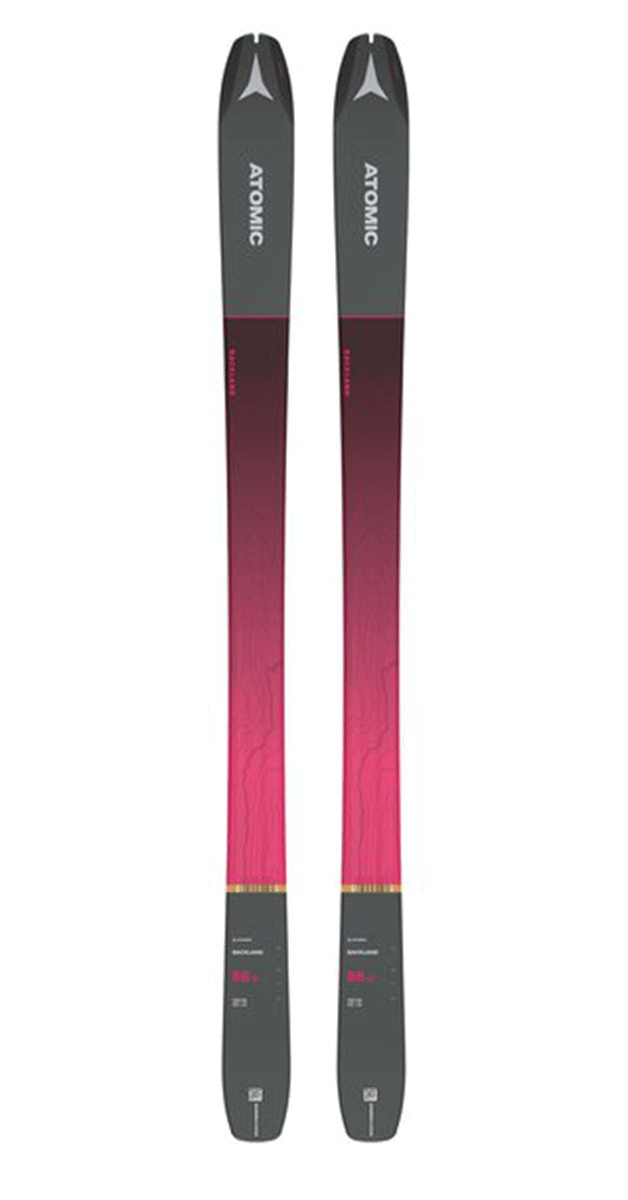
HikeForPow(der)
Your guide to backcountry skiing and avalanche safety gear.

Long Term Review: Salomon MTN / Atomic Backland Touring Binding
January 31, 2022 mike comments 4 comments.
After a couple of seasons of backcountry skiing on the Salomon MTN pin bindings I’m ready to share my thoughts. In short: simple, light, and solid (with one caveat I’ll get into below). The toe clamps are crazy strong, the lifters are easy to use, and they climb and ski like a traditional pin binding. Which is mostly good but can be bad in some scenarios – hard pack in pin bindings is never great. But hard pack isn’t what these are bindings are intended for.
The MTN binding suits my needs pretty much perfectly but they won’t be ideal for some skiers. To save weight, Salomon limited the release adjustability by using a replaceable U-spring. Unfortunately the spring only comes in 3 flavors, so really light or really heavy skiers are out of luck. And if you aren’t a fan of the ‘direct’ feeling of a pin binding you may want took at a different set of clamps.
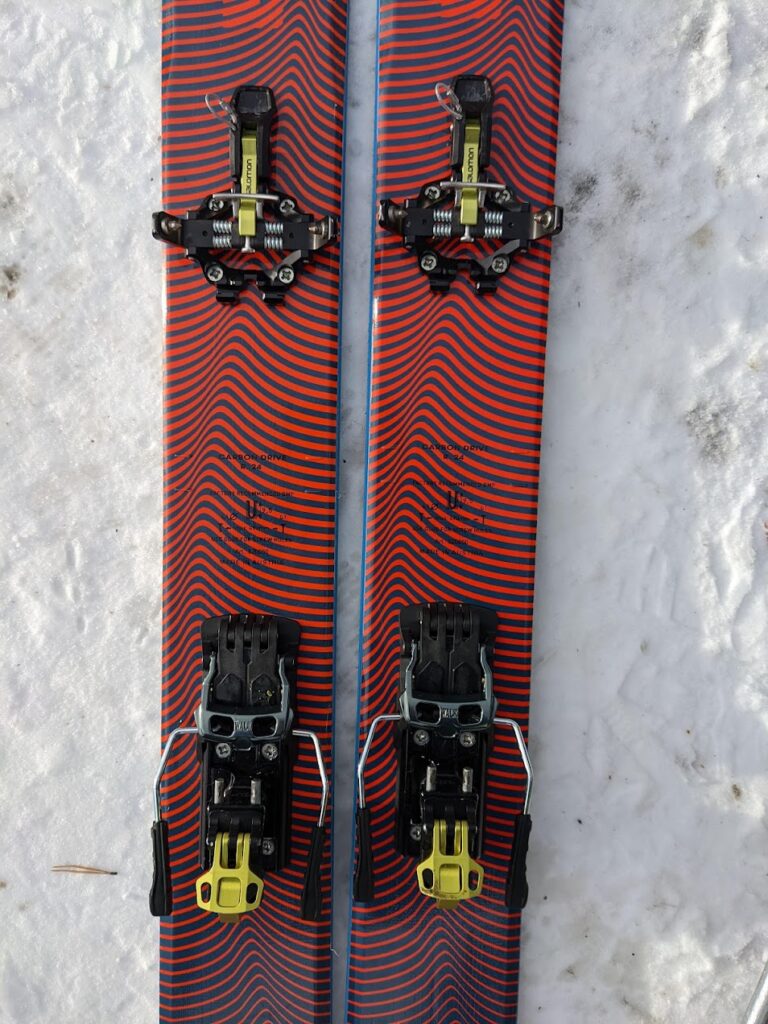
MSRP: $449/$499 USD (leashes/brakes) Weight: 296 grams (no brakes) Brake sizes: 80, 90, 100, 110, 120 mm Brake weight: 96 grams Release range: ‘women’, ‘men’, ‘expert’ (aka light, medium, stiff) Risers: flat, mid, high Pin height delta (ramp delta): ~9 mm BSL adjustment range: 30 mm
Buy now: Backcountry.com , evo.com , REI
Salomon has been making excellent alpine bindings for almost as long as I’ve been alive. It’s no surprise that they decided to dip their toe into the light(ish) alpine touring segment of the market. And boy am I glad they did. The Salomon MTN / Atomic Backland (same binding, different graphics and name) is a solid piece of kit.
It has been available for quite a few years now and Salomon recently tweaked the design. The differences are slightly beefier toe wings and heel tower. This review is based on the original version and the fact that Sally only made minor tweaks is a good sign (if it isn’t broken, don’t fix it).
Salomon didn’t try to reinvent the wheel with toe of the MTN/Backland binding and that’s a good thing. It’s a simple design that looks like a fairly traditional tech toe and is pretty much entirely metal. The ski/walk lever is the only plastic bit and even it has proved to be durable.
My favorite thing about the toe piece has to be the springs. They are strong af. The amount of force required to close or open them is noticeably higher than Dynafit ST or G3 Zed 12 (the other pin bindings I had on hand to test side by side). I have definitely forgotten to lock the toe more than once when touring but I’ve never popped out, even on steepish side hills. In theory you could leave the toe unlocked when touring in terrain where that might be beneficial.
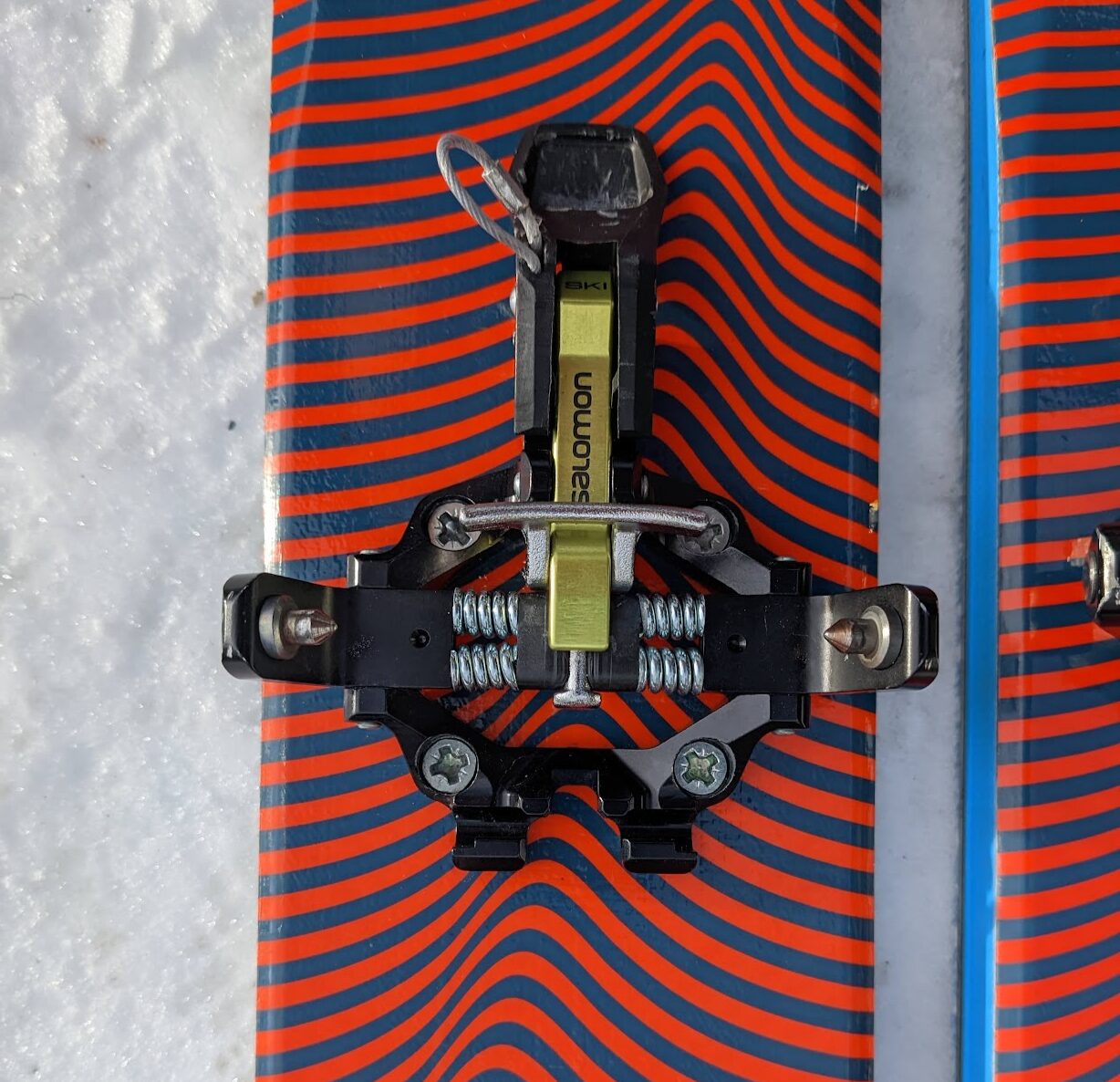
Stepping into the MTN is pretty straight-forward, similar to most other tech bindings out there. A small metal guide helps keep your boot in the right spot, but it can still be tricky to get it right in deep snow. But like all tech bindings, it gets easier with a bit of practice.
There is a leash loop integrated into the ski/walk lever so there’s no fiddling around to find a leash attachment point. There’s also a crampon attachment built into the toe. Salomon crampons are available, but Dynafit crampons also work with the included ‘keeper’ (basically a little plastic clamp that keeps the crampon from sliding around). Unfortunately I don’t have a pic of the keeper thingy…I lost it almost immediately. Plum crampons apparently work too, but I can’t verify.
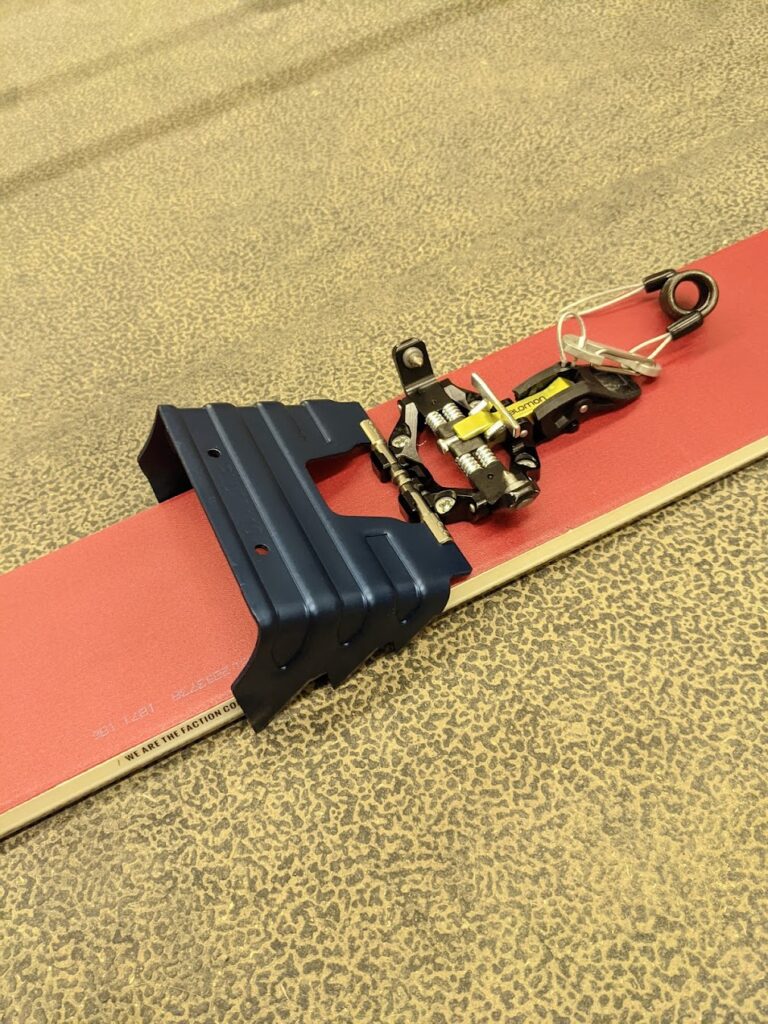
Heel Tower and Risers
Like the rest of the MTN bindings, the heel tower is an all metal build with a generous 30 mm of boot length adjustment. Rotating the heel tower takes an appropriate amount of force in my opinion. It feels confidence-inspiring in that it isn’t super easy to rotate, but it isn’t so difficult that you’ll struggle.

One thing that surprised me about the MTNs is that the heel tower rotates independently of the risers. Coming from Dynafit ST bindings, my first instinct was to try and turn the whole tower but this obviously didn’t work out. You have to grip the big ‘middle’ portion of the tower (with the pins) and spin that. The risers don’t move, which is actually convenient in that you can just flip down the mid riser and cover the pins. No need to spin the tower at all if you don’t need flat touring mode.
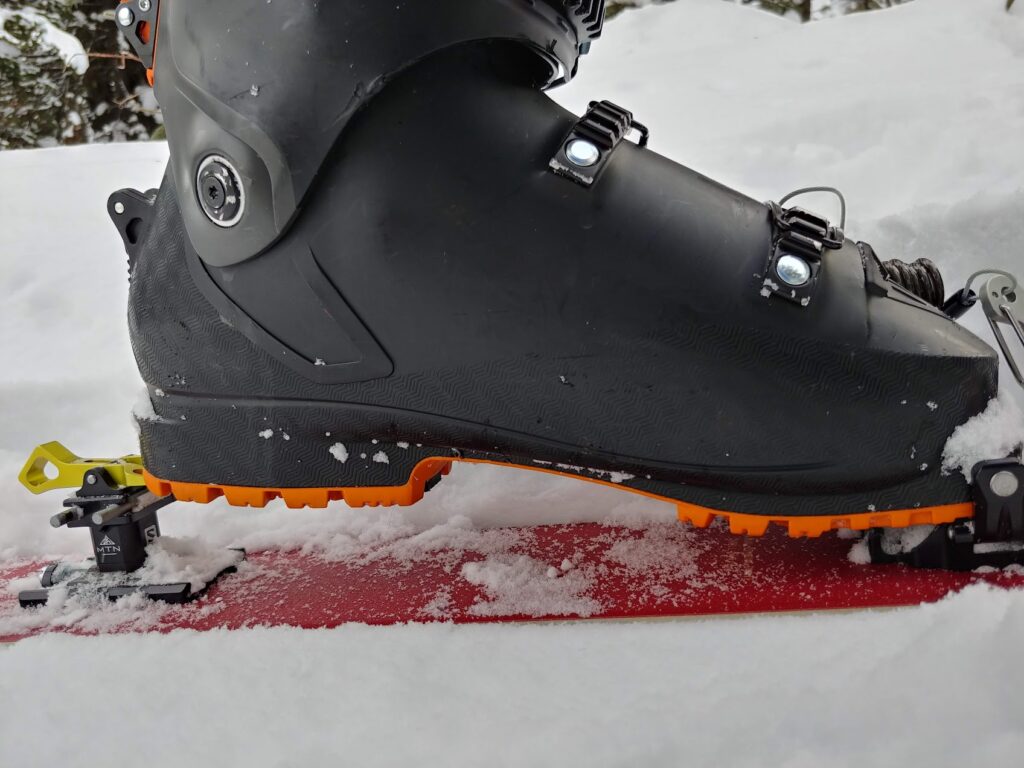
The risers are a simple but effective design. A smaller riser on top acts as the mid-height and you can flip another riser over top of this for steeper tracks. They’re both fairly quick to grab with a pole handle and you quickly go directly from flat to the high riser with a pole basket.
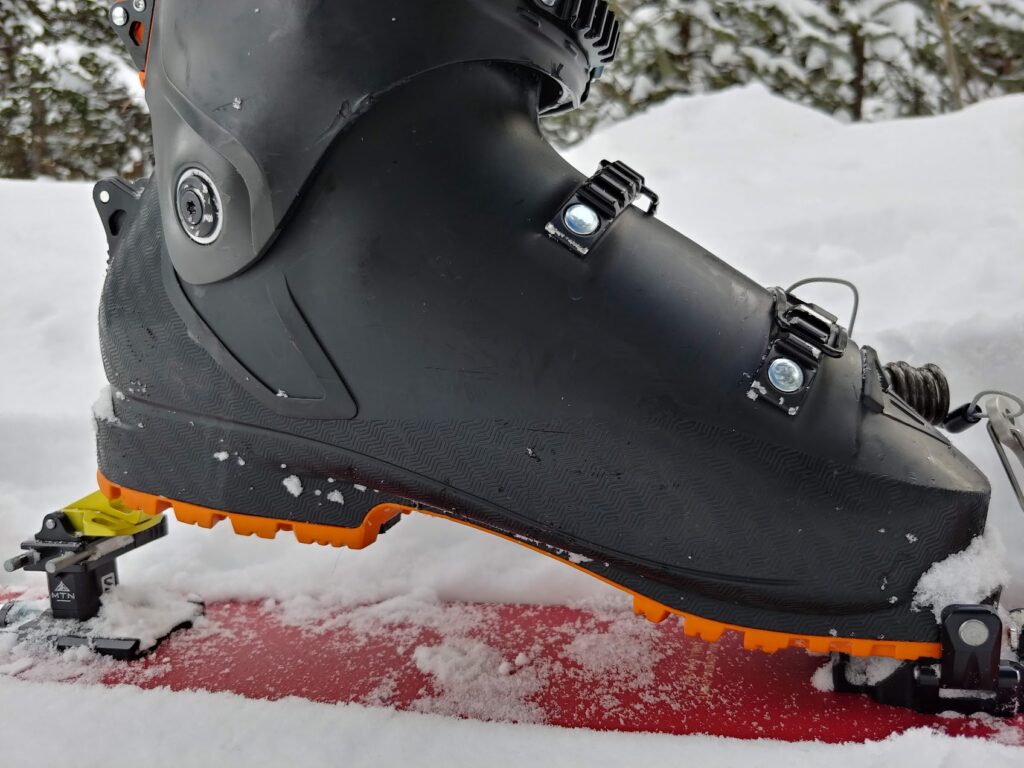
You also get a true flat mode when using leashes by rotating the heel 90° in either direction, but with brakes your heel is slightly elevated due to the lever that secures the brakes in walk mode. I’ve found both ‘flat’ modes to be just fine for long flat approaches provided your boot has enough cuff movement (most semi-modern touring boots do).
Brakes and Leashes
Salomon gives you the choice of going with leashes for a simple, light setup or with brakes for a slight weight penalty (~95 grams). I should point out that the leash model is ~$50 cheaper. If you opt for leashes, you can also mount the heel without the stomp pad to get an almost flat ramp delta if that’s your thing. The leash also works as a spacer to get the correct heel gap (4 mm) which is a nice touch.
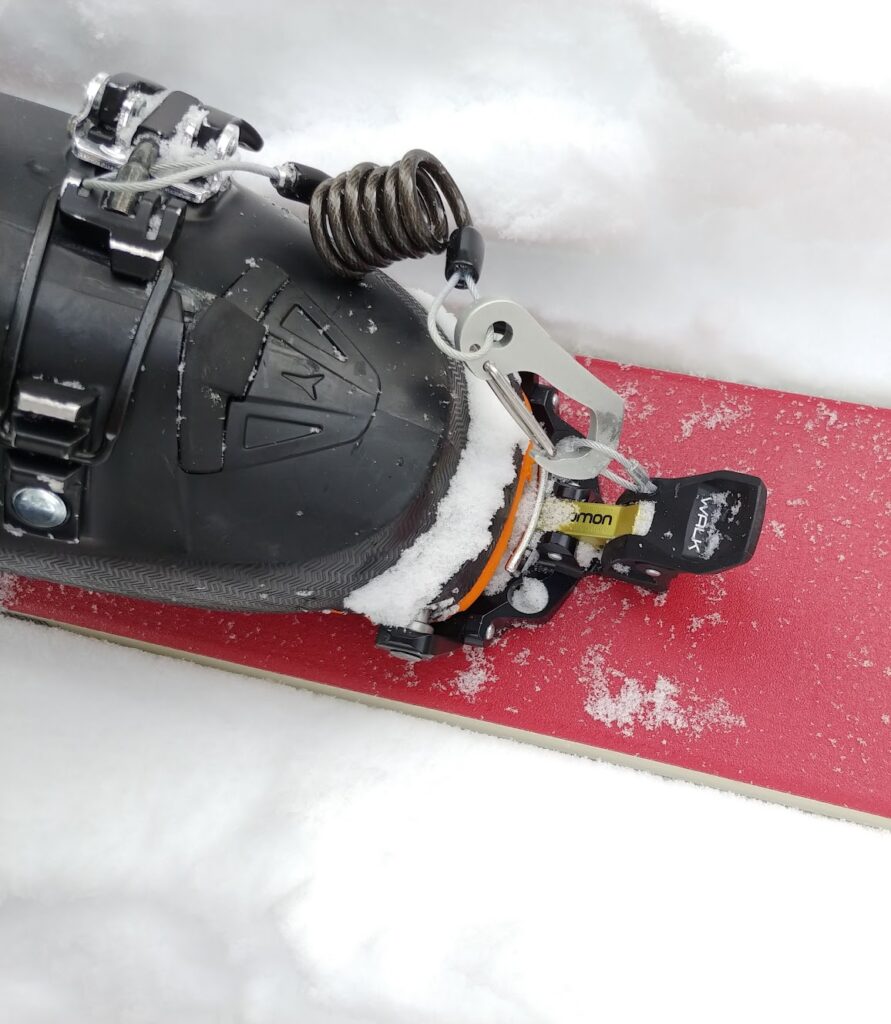
I’ve had these set up both ways and they both work well. The leashes are fairly short and don’t have a break point, so it’s very possible you could get tangled up in your skis in a crash. The brakes mount under the heel tower and require one additional screw in front of the heel. The walk/ski lever looks similar to the one on the Shift binding, but this one has been way more effective. It actually holds the brakes in place, where on the Shifts I find my brakes pop loose at least once a tour.
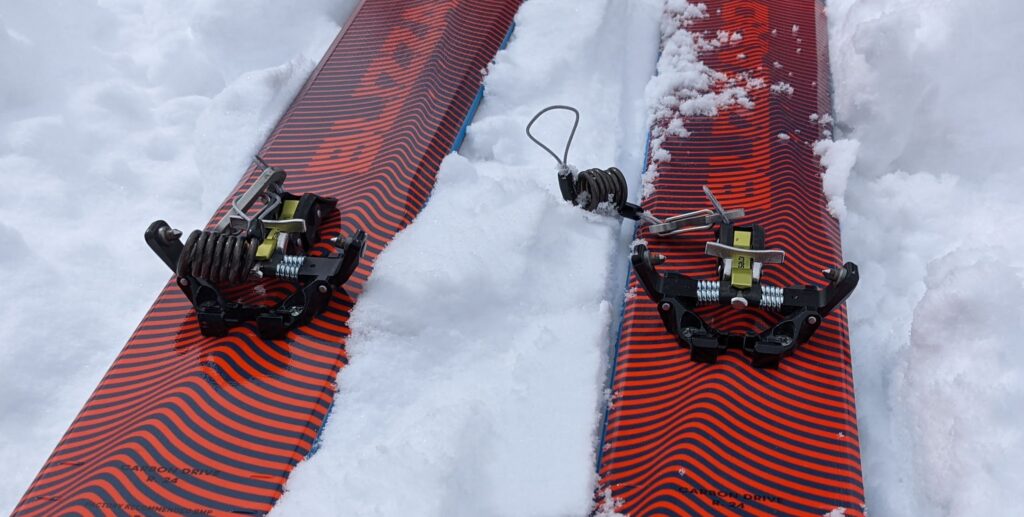
Uphill Performance
Weighing in at a hair under 300 grams without brakes, the MTN tech binding is on the lighter end of the spectrum (ignoring ‘race’ bindings). Although important, weight isn’t the only factor that affects how a binding feels when skinning. But I’m happy to report that with heels free, the MTN feels great. It’s a tech toe so the pivot point feels fairly natural and as I mentioned above the toe springs are strong. Even with toes unlocked they stay solidly attached to your boots.
Flipping the risers up/down is a simple affair with a pole grip or basket. And with the high riser you’ll be in a good position for steeper skin tracks.
Downhill Performance
If you’ve skied an ‘old-school’ tech binding with no elasticity you have a fairly good idea of how these are going to feel. Direct is a good way to describe them. The ramp delta is around 9.5 mm, so a slight forward lean but you can flatten this with leashes by omitting the stomp pad.
In soft snow I have absolutely zero complaints skiing the MTN. Driving biggish skis has been no problem (I had these on Candide 3.0s for a season, which are 108 underfoot) and they feel very connected with the ski. I haven’t noticed any play/slop in the heel (until recently, more on that below) and have had zero pre-release issues when charging fairly hard.
On hardpack snow…well they’ll get you down the hill and keep you attached to your skis but they’re harsh, like many other tech bindings. I wouldn’t consider these for a 50/50 binding.
Release Adjustability
One compromise Salomon made to keep weight down is to limit the release adjustment range in the heel. Many tech heels now have continuous adjustment from 4-10 or 4-12, but the MTN only has 3 discrete release values. Release pressure is adjusted by swapping out the u-spring in the heel. Thicker u-spring, higher release value (basically the resistance of the metal to bending determines release pressure).
The MTN binding comes with 3 sets of u-springs they call Women, Men, and Expert. This translates loosely to light, medium, stiff and from what I’ve read this equates to something like 6-7, 9-10, 11-12 on a DIN scale. This is anecdotal, but sounds like it’s in the right ball park. I’m ~180 pounds with no gear and ride the Men’s spring (I have big ass feet and usually run a DIN of 9 or 10 on alpine bindings). Stepping into the heel needs a solid effort.
After banging on these bindings for 2.5 seasons (part-time – I don’t always ski these) the heel tower has developed a bit of play where it interfaces with the adjustment track. I can slightly wiggle the heel by hand (on both bindings) and if I really pay attention, I can feel it when skiing on hard snow. When skiing in soft snow it isn’t noticeable at all, but it will be if it gets any worse. I’ll keep this updated if that happens.
This is the only complaint that I have with these bindings, and apparently is a fairly rare issue only with the very first generation of MTN bindings. From what I’ve gathered there have been few reports of this, so I think I just got unlucky.
Many many users of these bindings do not have any heel play and word on the street is that Salomon did a little something to address this in the new generation (can’t confirm…let me know in the comments if you can).
On the plus side, everything else about the MTN has held up beautifully. There is no detectable play in either of the toe pieces. Rotating the heel still needs an appropriate amount of effort and the lifters are still solid.
Final Thoughts on the Salomon MTN Binding
Despite the durability issue in the heel I encountered, if/when the play gets worse, I’ll more than likely replace these with another set of MTNs. With my own money – these were not given to me or discounted in any way. The pros of these bindings (light weight, easy to use brakes, no pre-release, flat mode, 2 risers, etc.) are enough to outweigh the small chance of a bit of heel play.
Provided that the limited release ranges work for your weight and ski style, I would highly recommend the Salomon MTN binding as a touring specific binding. There are much better options for a 50/50 backcountry/resort binding but that’s not what the MTN is intended to be. Mount these on some light skis and fly up the skin track to your nearest powder stash.
4 thoughts on “ Long Term Review: Salomon MTN / Atomic Backland Touring Binding ”
Hi I really like my atomic version. I try to only ski soft snow and am consider going to the W spring for safety. I have a question. When storing these bindings should the toe be in the closed or open position? That is, the lever should be down or up? Thanks
Hi Al, good question! To minimize tension on the toe springs over the summer, you should close the toe piece.
Thanks for the answer. Just to be clear, the toe lever should be parallel to the ski for storage, as in the same position as when you’re skiing?
Also, I’m an old guy that is pretty ez on equipment and stick to softer snow. I’m thinking of dropping down to the W uspring (im currently using the M uspring) as I rarely fall and probably don’t need the same retention as younger person my size who skis harder on harder snow.
What do you think? Thanks, al
Yep, lever parallel to the ski, same as ski mode. Locking it out in walk mode might put a bit of tension on something (probably minimal, but there’s no reason to lock it out).
As for the W spring question, I can’t make a solid recommendation over the web – it sounds like it would be fine but if I were in your shoes, I would consider the consequences of an unexpected release. Using the weaker spring you might pop out when you don’t want to. Skiing somewhere steep or in trees this could be bad news. If you do switch to the W spring, test it on a run where a binding release will be of low consequence. Ski as hard as you normally would and see if you pop out. If not, great! But if you do release in fairly ‘normal’ circumstances you may want to reconsider…
Leave a Reply Cancel reply
Your email address will not be published. Required fields are marked *

- Mountaineering
- Parts & Accessories
- Full-featured
- Trim to Fit
- Off the Roll
- Avalanche Safety
- Women's Tops
- Men's Bottoms
- Women's Bottoms
- Men's Suits
- Women's Suits
- Package Builder
- Boot Fitter
- Binding Finder
- Ski Objectives
- Comparisons
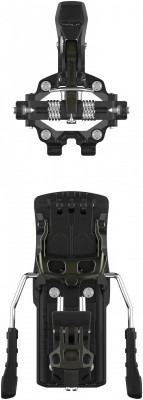
Atomic Backland Tour Binding & Brake

Free shipping
Holy stoppers: the Atomic Backland Tour binding with an innovative brake! Weighing in at a svelte 325g per side, this binding flaunts one of the highest feature-per-gram ratios we’ve seen. It includes all the creature comforts necessary to coax you into doing just one more lap. In addition to all the bullet points from the brakeless version , the Backland Tour + Brake offers five widths to choose from to perfectly fit your skis. The brakes have a reliable on/off switch to change the sinister-looking arms from walk mode to ski mode (a move that can be accomplished without stepping out of the ski). The binding is refreshingly simple, straightforward, and has a logical approach to stopping a backcountry ski.
The toe piece is a sturdy beast that features uphill tech-efficiency and serious downhill chops. An oversized lever increases ice-breaking and socket-clearing power while a patented aid helps with step-in. The heel piece adjusts 50mm for different boots and offers a flat-on-ski mode to ameliorate those long approaches. Two risers help with climbing once you get there. An integrated crampon receptor has you ready for spring. Interestingly, the Backland comes with three release springs that let you swap between mens, womens, and expert level settings. The Atomic Backland platform is a simple, capable, user-friendly binding that includes a lot-a-bit of everything for just a little-bit of weight.
- Three easily-swapped release-springs included: men’s, women’s, and expert.
- Patented Step-In Aid means you won’t subject yourself to Dyna-fiddle during transitions.
- Three climbing positions include a flat mode and two beautifully machined lifters.
- 50mm adjustment track offers plenty of flexibility to accommodate a boot-quiver.
- Five brake sizes to choose from: 80mm, 90mm, 100mm, 110mm, 120mm.
Note: This binding accepts both Plum and Dynafit crampons, though with the latter the included crampon keeper clip must be used to prevent any lateral movement during use.
Update 2018/19: Just a new "gunmetal" grey color, the Backland stays the same otherwise.
Update 2020/21: A longer adjustment track gives 50mm of adjustment vs 30ish for previous versions.
Related Products
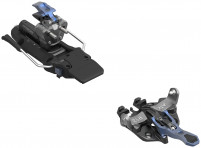

Questions & Reviews

Earn store credit by writing reviews. Learn more .

Compare ( 0 )
View products
Follow us on social media

Information
- News & Articles
- Privacy / Terms
Customer Service
- Shipping & Services
- Returns & Warranty
- Order History
- Gift Certificates
- [email protected]
- (801) 942-9084
- Salt Lake City, UT
- Powder Finder
- Ski resorts near me
- Switzerland
- Ski touring
- Snow Report
Atomic Backland 107

Top 10 ski resorts
- Wilder Kaiser
- Whistler Blackcomb
- Val Thorens
- Serfaus-Fiss-Ladis
Top 10 ski destinations
- Czech Republic
- Ski resorts
Subscribe to our Newsletter
Information.
- Privacy policy
- Content policy
2023-2024 Atomic Backland XTD 120
Boot: 2023-2024 atomic backland xtd carbon 120.
Stated Flex: 120
Available Sizes: 24.0–30.5
Stated Last (size 26.5): 100 mm
Stated Range of Motion: 74°
Stated Forward Lean: 15° (adjustable to 13° and 17°)
Size Tested: 26.5
Stated Boot Sole Length (size 26.5): 297 mm
Blister’s Measured Weight (size 26.5):
- Shells, no Liners: L: 1084 & R: 1085 g
- Liners, no Footbeds: L: 290 g & R: 286 g
- Shells + Liners = 1374 & 1371 g
- Stock Insoles: 21 & 21 g
- 1 Upper (7000-series alluminum; micro-adjustable; w/ tour latch)
- 1 Lower (“Cross Lace 2.5” cable system)
Power Strap: 50 mm cam-style w/ quick release
Shell Material:
- Cuff: Carbon-Loaded Polyamide (PA)
- Lower Shell / Shoe: Carbon-Loaded Polyamide (PA)
Soles: fixed full-rubber (ISO 9523)
Binding Compatibility: pin / tech bindings; MNC bindings
Tech Fittings: “Investment Cast Tech Inserts”
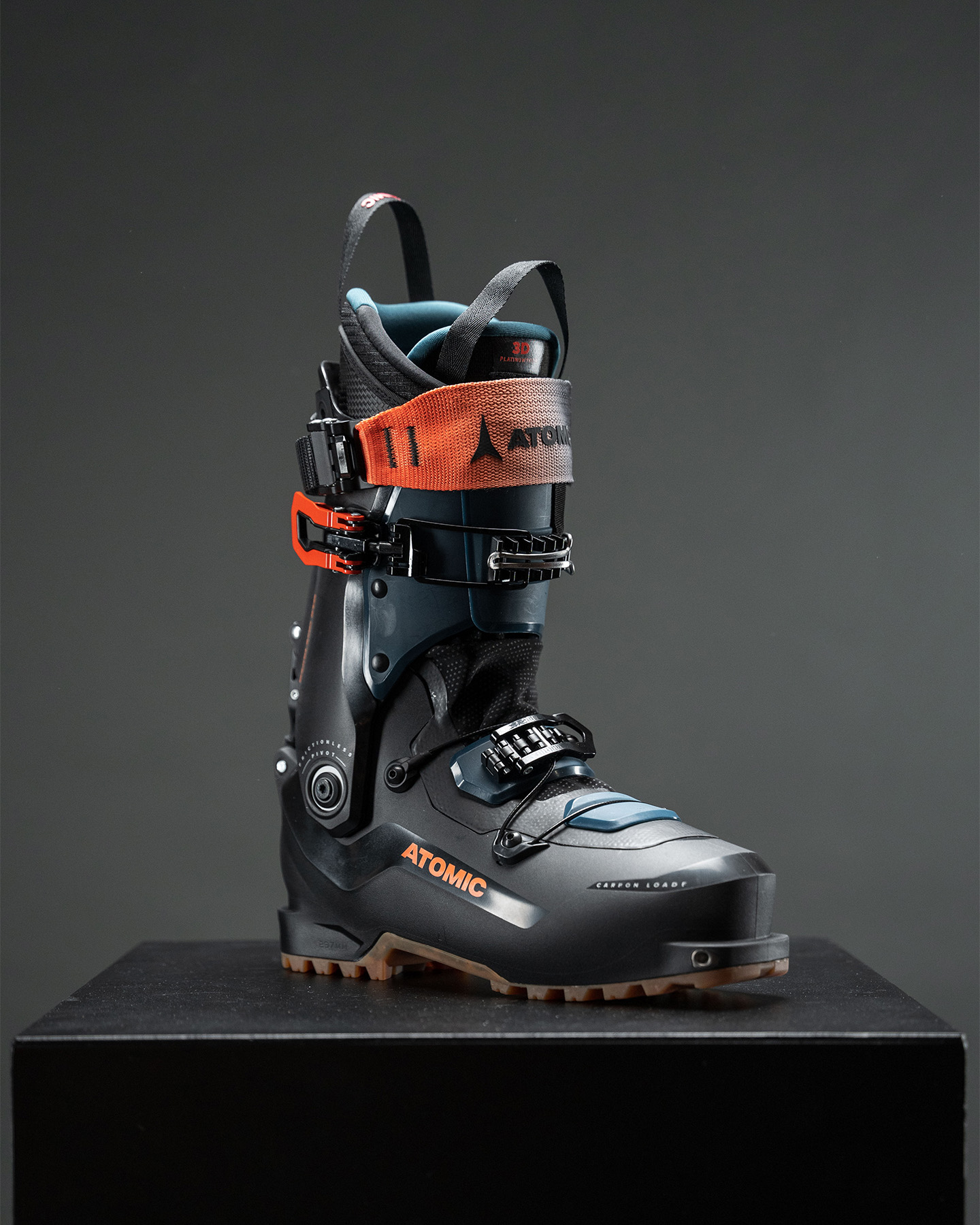
Atomic’s Backland lineup of boots has long served as their dedicated touring models, offering a lighter, more uphill-friendly platform than the brand’s stiffer, heavier Hawx XTD models.
In recent years, Atomic has expanded their Backland lineup to suit everyone from skimo racers to all-round ski tourers who don’t want / need alpine-boot performance in the backcountry.
Despite that expansion, all the Backland models were pretty uphill-oriented in the grand scheme, topping out at a stated 110 flex and typically falling below 1200 grams for a size 26.5 in the high-end models.
For the 2023-2024 season, Atomic is adding another series under the Backland umbrella, the Backland XTD. These are the most downhill-oriented boots that feature the Backland name, essentially filling the gap between the Backland and Hawx XTD series (see our writeup of the 23/24 Hawx Ultra XTD 130 BOA for more on those boots).
We’ve been spending time in the stiffest Backland XTD, the Backland XTD Carbon 120, and Blister Members can check out our initial on-snow impressions in our Flash Review . Furthermore, if you want to hear all about the backstory of these boots and everything else Atomic has going on for the 23/24 season, be sure to check out our GEAR:30 conversation with Atomic Ski Boot Product Manager, Matt Manser .
For now, let’s get into the details of the new Backland XTD series, and the Backland XTD Carbon 120 in particular.
The 2023-2024 Atomic Backland Boots
For the 23/24 season, there are several different boot collections that fall under the “Backland” name, but they vary a great deal. Here’s a brief rundown:
- Lightest, most minimal, most uphill-oriented boot; ~788 grams; 96 mm last; 80 flex
- Slightly more versatile / more downhill-oriented alternative to Backland Ultimate; ~1050 g; 98 mm last; 95-110 flex
- Mixes quick transition setup of Backland UL with slightly burlier build; ~1100 g; 98 mm last; 95-100 flex
- Separate power strap & upper buckle not linked to walk mechanism; ~1050-1200 g; 98 mm last; 85-110 flex
- Most downhill-oriented of the Backlands; ~1380-1520 g; 100 mm last; 85-120 flex
Now that we have a full overview of the entire Backland lineup, let’s focus on the Backland XTD, in particular:
What Atomic says about the Backland XTD Series
“Built for those ski tourers looking for a medium-fit boot that offers rock-solid handling on the down and can climb anything on the way up, the all-round Backland XTD is your ticket to a season of touring adventures.”
A note on sizing: for the 23/24 season, the men’s Backland XTD boots are available from size 24 to size 30.5; women’s models are available from size 22 to size 27.5

Depending on the model, the Backland XTD boots feature Carbon-Loaded Polyamide (PA), True Flex Polyurethane (PU), standard PU, and/or standard PA for the cuffs and lower shells.
The Backland XTD Carbon 120, Backland XTD Carbon 120 GW, and Backland XTD Carbon 115 W all feature top-of-the-line Carbon-Loaded PA for both their upper cuffs and lower shells.
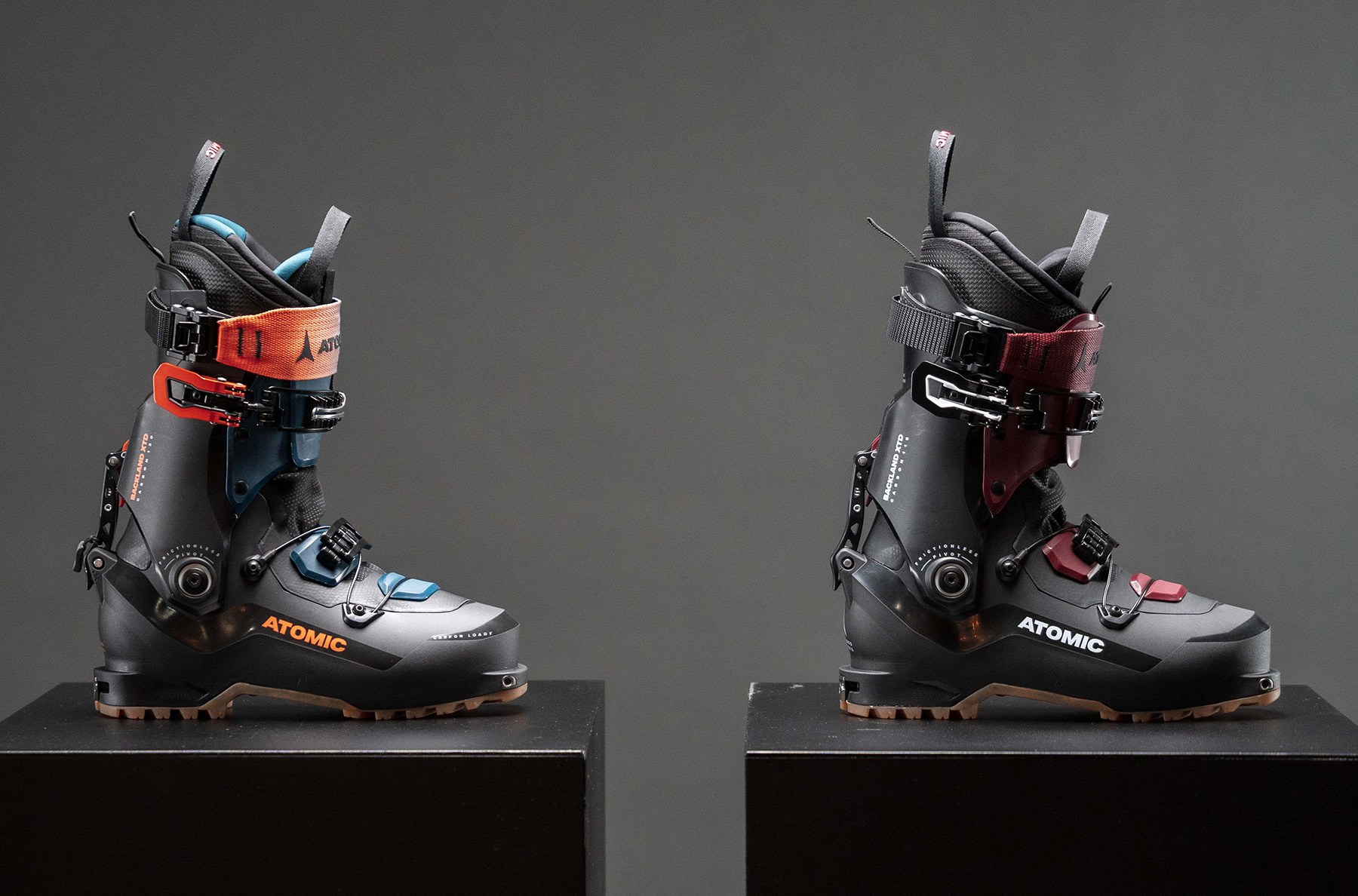
Atomic calls the shell layout a “Hybrid Overlap” design, which seems fair. The two parts of the cuff overlap at the top, while the lower shell features an opening over the top that’s covered by a textile gaiter and two partial plastic pieces under the cables and buckle that make up the lower closure. I.e., it’s not a full overlap like the Hawx XTD boots and its cuff overlap is smaller to create more range of motion, but it features a bit more plastic reinforcement than the other Backland boots.
All of the Backland XTD boots feature fairly light, minimal liners, but they’re a bit more substantial than the other Backland boots’ liners. The Backland XTD Carbon 120 features the highest-end liner, dubbed “3D Platinum Tour,” which is heat moldable. It’s quite light and flexible overall, but is more substantial (especially at the cuff and ankle) than most boots’ liners in the <1200-g class.
Walk Mechanism
The “Free/Lock 4.5” walk mechanism on the Backland XTD boots is very familiar, since it’s extremely similar to the walk mechanisms that Atomic has put on nearly all their touring boots. It’s fully external and consists of a big lever on the upper cuff that connects to a bar on the lower shell when in ski mode. It’s easy to use with gloves and we’ve previously had great experiences with it on other boots.
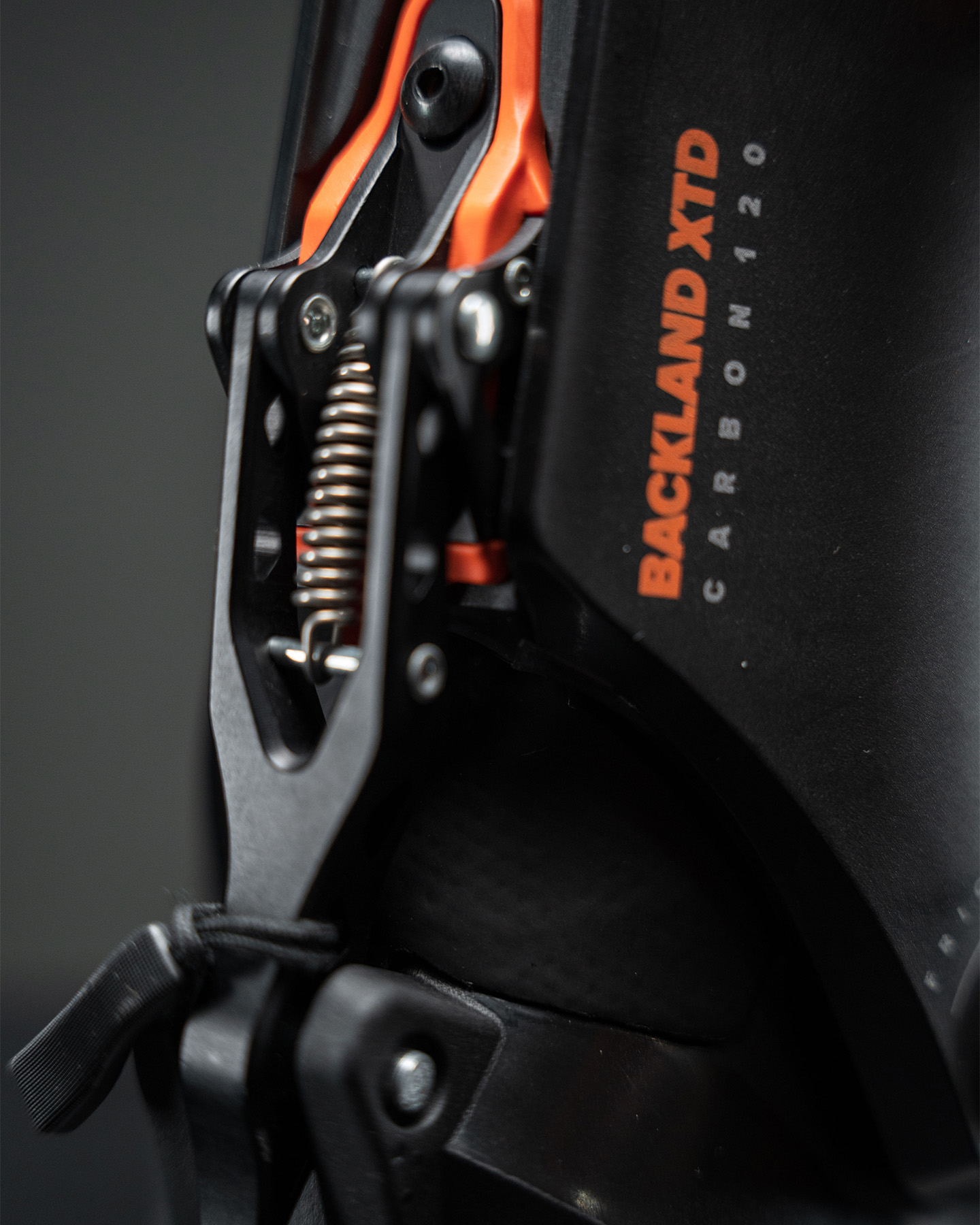
Adjustable Forward Lean
On that note about the Free/Lock walk mechanism, it has built-in forward lean adjustment. The Backland XTD comes stock with 15° of forward lean, but can be adjusted to 13° or 17° by sliding a chip where the walk mechanism attaches to the upper cuff.
The Backland XTD boots feature two buckles: one pretty standard one on the upper cuff, and one above the instep that tightens a cable that runs from the forefoot to the ankle. This is a pretty similar layout to the regular Backland series, though the Backland XTD features more substantial plastic reinforcements under its lower cables.
Power Strap
The top-of-the-line Backland XTD Carbon 120 and Backland XTD Carbon 115 W feature a 50 mm and 40 mm power strap, respectively, that’s tightened and loosened by a really nice cam-style buckle with a quick-release mechanism. The strap itself is a very thin but sturdy-feeling fabric.
The other models feature more typical velcro-style power straps of varying widths.
Unlike the other Backland boots, the Backland XTD boots feature an ISO 9523 touring sole that can work with MNC bindings (the Backland XTD boots with “GW” in their name have GripWalk soles that also work with GripWalk / ISO 23223 bindings).
The non-GW Backland XTD boots’ soles are still full-length rubber and non replaceable, with Atomic’s “Skywalk” tread and rubber compound.
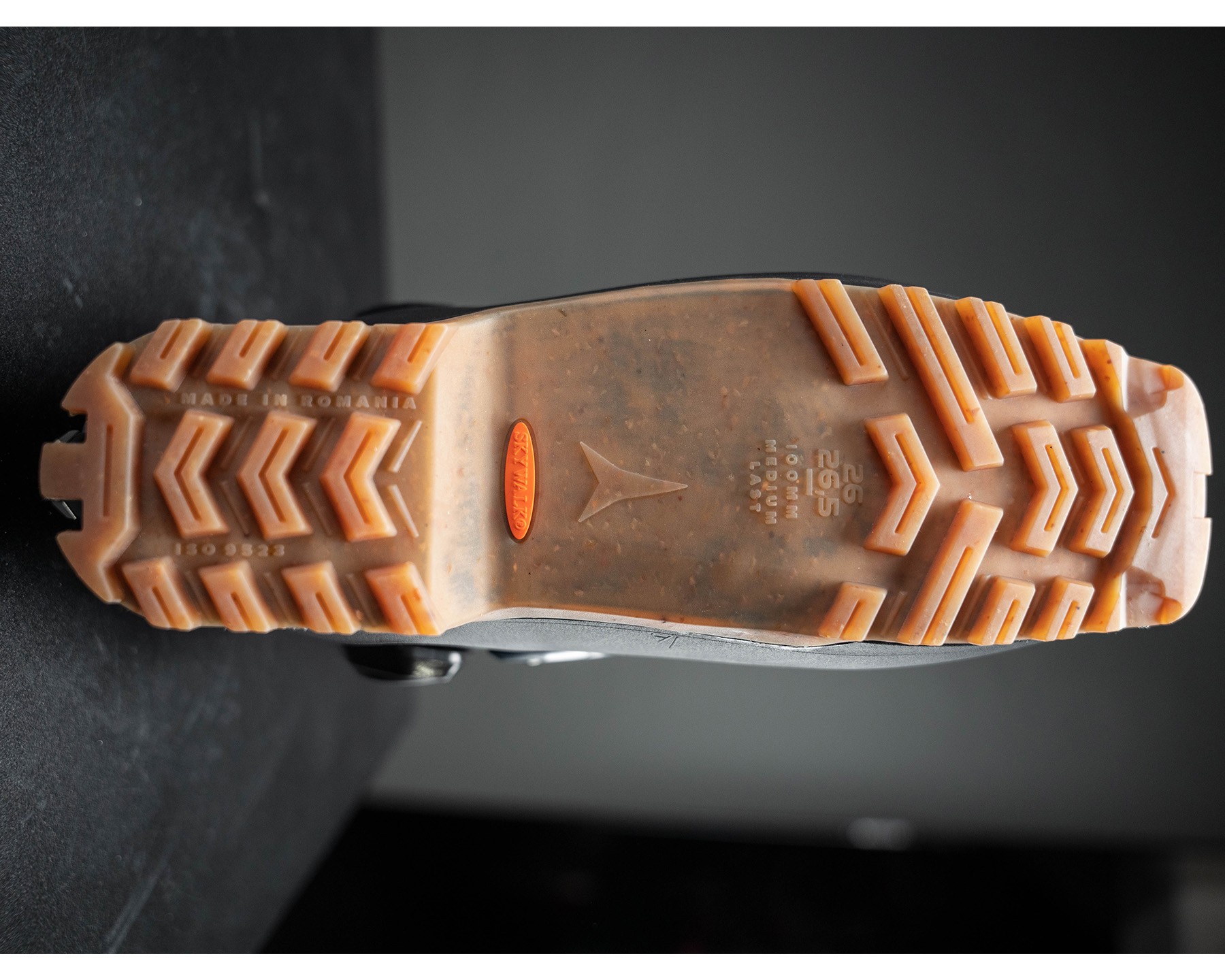
And of course, all the Backland XTD boots feature tech inserts for use with tech / pin “TLT” bindings.
Weight & Comparisons
Our size 26.5 Backland XTD Carbon 120 weighs about 1370 grams per boot. That’s notably lighter than most 130-flex “freeride touring” boots like the Atomic Hawx Ultra XTD, Scarpa Maestrale, and Dynafit Hoji Free, but also a fair bit heavier than what we often call “lightweight touring” boots like the Atomic Backland Carbon and Salomon S/Lab MTN Summit.
However, there seems to be a new subcategory forming between those two classes (apparently we’re gonna need to come up with yet another category name…). The most notable example is the Fischer TransAlp Pro, which comes in at a very similar weight and stated specs. The Salomon S/Lab MTN Summit is also similar in terms of stated flex and downhill performance, though it’s notably lighter.
Below is a number of our measured weights of other boots with walk mechanisms. We list the weights of each shell + the weights of each liner, then the total weights of the shells + liners. You can click on the link for each boot to see which model year(s) the weights apply to.
Tecnica Zero G Peak Carbon (27.5): 844 & 854 + 231 & 227 = 1075 & 1081 g Scarpa F1 LT (28.0 / 27.5): 1106 & 1101 g Atomic Backland Carbon (27.5): 882 & 884 + 228 & 230 = 1110 & 1114 g Salomon S/Lab MTN Summit (26.5) : 963 g & 971.5 + 212.5 & 215 = 1187 & 1178 g Salomon S/Lab X-Alp (28.0): 1010 & 1010 + 222 & 222 = 1232 7 1232 g Tecnica Zero G Tour Pro (26.5): 1099 & 1100 + 210 & 211 = 1309 & 1311 g Fischer Transalp Pro (26.5): 1053 & 1053 + 262 & 263 = 1315 & 1316 g Atomic Backland XTD Carbon 120: 1084 & 1085 + 290 & 286 = 1374 & 1371 g Dynafit Hoji Pro Tour (26.5): 1169 & 1174 + 214 & 215 = 1383 & 1389 g Scarpa 4-Quattro XT (26.5 / 27.0): 1248 & 1246 + 228.5 & 229 = 1476.5 & 1475 g Scarpa Maestrale XT (26.5 / 27.0): 1258 & 1258 + 247 & 252 = 1505 & 1510 g Atomic Hawx Ultra XTD 130 (26.5): 1147 & 1150 + 403 & 404 = 1550 & 1554 g Roxa R3 130 T.I. (27.5): 1319 & 1320 + 263 & 263 = 1582 & 1583 g Head Kore RS 130 GW (26.5): 1334 & 1340 + 279 & 276 = 1613 & 1616 g Dynafit Hoji Free (27.5): 1317 & 1332 + 331 & 325 = 1648 & 1657 g Atomic Hawx Prime XTD 130 (26.5): 1242 & 1249 + 408 & 410 = 1650 & 1659 g K2 Mindbender 130 (26.5): 1428 & 1427 + 346 & 348 = 1774 & 1775 g Fischer Ranger Pro 130 GW DYN (26.5): 1381 & 1381 + 388.5 g & 392.5 = 1770 & 1774 g Lange XT3 130 LV (26.5): 1407 & 1410 + 368 & 368 = 1775 & 1778 g Atomic Hawx Ultra XTD 130 BOA GW (26.5): 1385 & 1386 + 406 & 405 = 1791 & 1791 g Nordica Strider Pro 130 DYN (27.5): 1445 & 1440 + 363 & 373 = 1808 & 1813 g Tecnica Cochise 130 (22/23) (26.5): 1398 & 1405 + 422 & 419 = 1820 & 1824 g Dalbello Lupo Pro HD w/o Tongues (26.5): 1589 & 1596 + 266 & 267 = 1855 & 1863 g Full Tilt Ascendant SC w/o Tongues (26.5): 1577 & 1576 + 286 & 288 = 1863 & 1864 g Head Kore 120 GW (27.5): 1472 & 1477 + 477 & 477.5 = 1949 & 1954.5 g Dalbello Lupo Pro HD w/ Tongues (26.5): 1747 & 1754 + 266 & 267 = 2013 & 2021 g Full Tilt Ascendant SC w/ Tongues: 1740 & 1739 + 286 & 288 = 2026 & 2027 g

As always, our “Fit” sections will never replace the usefulness of the advice of an experienced bootfitter, nor are they designed to do so. The fit of any boot is the deciding factor and everyone’s feet are different, so we highly, highly recommend visiting a bootfitter before settling on a boot. With that said, here are some of my thoughts on how the Backland XTD fits my feet. For reference, I have a fairly wide midfoot (a little over 100 mm when unsupported), low instep, low-volume ankle, and skinny calves. The Tecnica Mach1 MV and Nordica Strider are the boots with which I’ve gotten the best out-of-the-box fit.
As the only 100mm-lasted boot under the Backland name, the Backland XTD boots feature a higher-volume fit overall. Despite not looking all that wide, I haven’t yet experienced any midfoot pain in them, which is extremely rare for me (all I’ve done to adjust fit is put in my custom insoles).
The ankle pocket feels fairly snug, relative to the midfoot volume, while the toe box maybe feels a touch lower volume than average for a 100mm-last boot. I think the instep fit should be versatile, given that the plastic doesn’t fully extend over that area. I was able to crank the lower buckle down enough to get a secure fit over my low instep, though it does create a bit of a pressure point where the buckle is. Overall, this is one of the most comfortable out-of-the-box fits I’ve experienced for my (pretty tricky) feet. We’ll see how / if that changes over time.
Bottom Line (For Now)
The “touring boot” category continues to diversify, and just when we thought we had a handle on the various subcategories under that umbrella, Atomic has shaken things up with their new Backland XTD boots. Blending the simple buckle layout and (fairly) low weight of more uphill-oriented boots with some of the downhill-oriented features and flex patterns of heavier models, the Backland XTD boots look like they could make for versatile touring options for those caught between the established categories.
Blister Members can check out our initial on-snow impressions in our Flash Review linked below, and then we’ll chime back in with a full review once we’ve been able to spend much more time in these boots.
Flash Review
Blister Members can read our Flash Review of the Backland XTD Carbon 120 for our initial on-snow impressions. Become a Blister member now to check out this and all of our Flash Reviews , plus get exclusive deals and discounts (including 10-20% off skis from 10+ brands), and personalized gear recommendations from us.
23 comments on “2023-2024 Atomic Backland XTD 120”
My biggest gripe with the Fischer Transalp Pro and now these, is that they go and ruin what could be a really good long trip boot for people who like to ski, by putting full toe lugs on them so they can be used in downhill binders – this makes them average to walk in vs. toe lugs that are only designed to accept a crampon bail…
Hi Tom, fair point – a non-norm sole would be lighter and walk more naturally. But the big reason for an ISO 9523 sole is binding compatibility, not just for alpine bindings but for hybrid bindings like the Shift, Kingpin and Tecton. You can’t use those bindings with a non-norm sole.
So what Tom wants to know: how much plastic can one grind off the front off the toe before the tech insert becomes insecure? ;-)
I have a Scarpa F1 from 2018/2019 that has a non-norm toe but works OK in a Tecton binding
This boot comes damn close to the original 19/20 Hawx Ultra 130 XTD in terms of weight. A direct comparison regarding touring and downhill performance would be great!
Are these filling the region that the previous model Hawx XTD 130 covered? Since the new model got quite a bit heavier and more 50/50 oriented I was hoping they’d cover the gap and this seems to be it.
Hi Karl – think of it this way: Hawx XTD boots are alpine boots that can go touring and the Backland XTD boots are touring boots that ski really well. You can use our Hawx XTD boots in the resort, all day long but I wouldn’t do the same with a Backland XTD. The Hawx XTD boots will ski circles around the Backland XTD, but the Backland XTD will leave the Hawx XTD far behind on the skin track. It just depends on which compromise is more important to you. And remember- compromises aren’t a bad thing, just part of the reality we live in and an honest discussion about them will help make gear choices clearer and easier. -Matt
Today I have Hawk XTD (old model 2021-22) that I use for all types of skiing. I’m thinking maybe replace them with Backland XTD but it might be better to complement the Hawk with Backland Carbon? The Backland XTD is probably not that good in piste? But it is also nice to only have one pair of boots.
Hard to imagine just by basic construction knowledge that something with less overlap and material will perform as high as something with actual full overlap.
I think it makes sense for boots in the beefy touring category to be compatible with beefy touring bindings. I know lots of people want a binding like Tecton, Shift, Duke or at least Kingpins. I am not one of them, but look around at trailheads or the Internet, and people who worry about skiing performance and don’t mind a bit of weight(ie the same customers who would buy this boot or the Transalp), are often picking those bindings. The other group is people like my wife: her Alpine skis are not too heavy, and have Shifts on them. If we are doing a trip with only a day or so of touring, she might bring just her touring boots, along with her alpine boots and skis.
The one place where I do agree with your question, is that this boot, unlike any other AT I know of, comes in two sole versions: AT and GW. So, if it was up to me, I’d have made a GW version, for those who want max binding compatibility, and a short, non norm, rubber sole version. But, Matt knows all this too, and being a professional, I am sure he has looked at market research to see what would sell best, which isn’t always what’s best for you and me, or even objectively the best for most people.
Is the boot mouldable with the Memory Fit process? Didn’t notice any mention about that.
Hi Joel – sorry, we just have too much to talk about and not enough time to do it in haha. Yes, the shell is heat moldable either through traditional stretching or Memory Fit, depending on how many areas of adjustment you need. If you don’t need any of that, the liner is 100% heat moldable to help make a good fit even better. – Matt
“Free Mountaineering” it’s what happens when a company that knows how to make a WC Ski boot messes around with walk modes and lightweight shells. Unlike these “leather boot” companies trying to make a plastic walking boot, that skis.
Hi everyone, this boot looks really interesting to me and I will be excited to try it on. I definitely like the fact that it has a full ISO 9523 sole. I have a Shift binding on my touring skis, like this binding for a lot of reasons and would be very hesitant to change to something with less consistent retention and release characteristics (meaning all other pin bindings). But I wouldn’t mind my boots walking more effortlessly with more forward ROM, so I certainly see an application for this boot. It’s also great to see that this boot has what looks like a proper instep buckle and the non-overlap shell design in combination with that buckle should permit adjustment to a wider range of foot instep heights. And Luke is the first reviewer that I am aware of to point out the value that lies in this adjustability, rather than just classifying boots as low or high volume, as is often the case elsewhere, thank you! In my case, an adaptability for a very low instep would be great. This is also my gripe with the Hawx Ultra XTD boot, which is my touring boot and that has a bit too high of an instep for me. I have a couple of fit questions on this boot. – I love the narrow and relatively deep heel pocket of the Hawx Ultra, is this similar on the Backland XTD? On previous Backlands it seemed to be wider. – the Hawx Ultra stance angles are the best for my anatomy and skiing style that I’ve come across, so are the boot board ramp angles comparable when in a Shift binding? Of course, a heel wedge can permit some adjustment, but raising the heel also lifts the foot upwards out of the heel pocket, so it’s always preferable to have the manufacturer design it in. – it looks as though the last is not as low down in the boot as with the Hawx, where the toes of the feet sit somewhere behind the toe lugs. This is great for the low stand-over height in the Hawx, but it makes punching or molding the boots for big toe length impossible at home and for my bootfitter. Here it seems the foot might be placed more above the upper end of the toe binding lug, is this correct? Can they thus more easily be stretched for extra legth if required? This is my usual issue which prevents downsizing for ankle fit. Cheers
Partly answer on the first question by Matt in the Year of the Boa Gear:30 podcast, the Backland XTD is built around a Hawx Prime last. So presumably, the heel pocket is wider than with the Hawx Ultra.
Hi Philipp – that’s correct, this is based on a Prime last, so a medium volume fit.
Stoked on the new design. Love my current Backland Carbon. They ski incredible for their weight and the freedom of movement on the climb is awesome. First pair of “uphill boots. That said, the Boa system has been a hassle. Slips, and needs replacing, falls off occasionally so i have become an amateur expert. Ready to never look at a boa again! And have some features like binding compatibility and a buckle on the front. What to do with used boots that have a broken boa but are otherwise good?
Hi Nate, you can get the BOA repaired and sell it once it is fixed. The current (22/23) Backland Carbon now comes with our Cross Lace, very similar to what is pictured here on the Backland XTD. The Cross Lace system generates more closing force than the M-series BOA system but still offers a clean lateral side vs. other buckle-operated closure systems. – Matt
As someone who used and still uses the original 17/18 Atomic Hawx Ultra XTD 130 exclusively for touring, how would you describe the differences or similarities in terms of fit, stiffness and flex between the new Backland XTD and the original Hawx Ultra XTD.
ever since my original liner started to deteriorate, I have been looking for a boot to replace my Hawx. something that would be a bit lighter, better for touring, with a proper rubber sole and better for transitions aka less annoying on the buckle-side. All this with still delivering a similar comfortable fit for my feet as well as flex.
Looks like the Backland XTD could be a contender. just worried now that its built on the prime last, so therefore I guess bigger volume compared to the Hawx Ultra XTD? I recently shop-tried the Fischer Transalp Pro which was the first getting somewhat close to what I’m looking for. Intriguing now that Luke seems to see some parallels between these two boots. Do I need to wait for next winter season to give the Backland XTD a serious look or do I just go with the Fischers now..?
Also a question on the new BOA technology: why didn’t they put it on the Backland XTD?
Hi derfredl – the new Backland XTD will be lighter and tour far better than your current Hawx Ultra XTD, but it will be a wider fit. Honestly, it’s more similar in purpose/fit to the Transalp you tried than your current boot. But, I honestly think you’ll find the fit, flex & cuff ROM to be better than the Transalp too.
Re: BOA – the new BOA system on the Hawx Ultra XTD is purpose built for heavier, thicker alpine boots with a traditional, overlap shell. On a true touring boot (like the Backland XTD) there just isn’t the space for the new BOA and it’s quite heavy, too. So for the Backland XTD it made more sense to use our Cross Lace system which still powerfully wraps the foot & offers a clean lateral side, but is noticeably lighter and won’t interfere with forward cuff ROM. -Matt
Thanks Matt for your explanations! Much appreciated and all makes sense. Decided to wait now for next Winter to check out the Backland XTD. Quite excited to get my feet into it!
For those wondering, I got a pair of these and as expected- tongueless/and partial overlap construction will never achieve a true 120 flex. While these may be ok for very light skiers and do have a progressive flex, they are probably a 100-110 at best. There’s is absolutely no way I would ski anything that needs gripwalk sole bindings. Just another weenie boot for weenie skis. If it fits you well I probably wouldn’t ski anything over 1500g with this, esp in anything other than perfect conditions. The irony with this boot is that the scarpa Quattro is basically the same weight, walks very good, and is a true 130.
Love these boots. Found issue with the liners not drying out on a recent hut traverse, which may be problematic for me as I move into skimo season.
The fit is the best I’ve ever had in a ski boot. Is the fit comparable to any of the lighter more uphill oriented boots?
Leave a Comment Cancel reply
Atomic Backland Carbon: A First Look
Atomic updated their backland series of boots for the 22/23 season. i plan to test the backland carbon. before diving into more comprehensive field testing for this season, here’s a first look..
The Atomic Backland Carbon is one of the SIX new flavors in the Backland series. The Backland boots vary from more affordable and less stiff to less affordable and stiffer. The Backland Carbon is the least affordable and most stiff in the series. Here’s a graphic to help with the related manufacturer’s model mayhem:
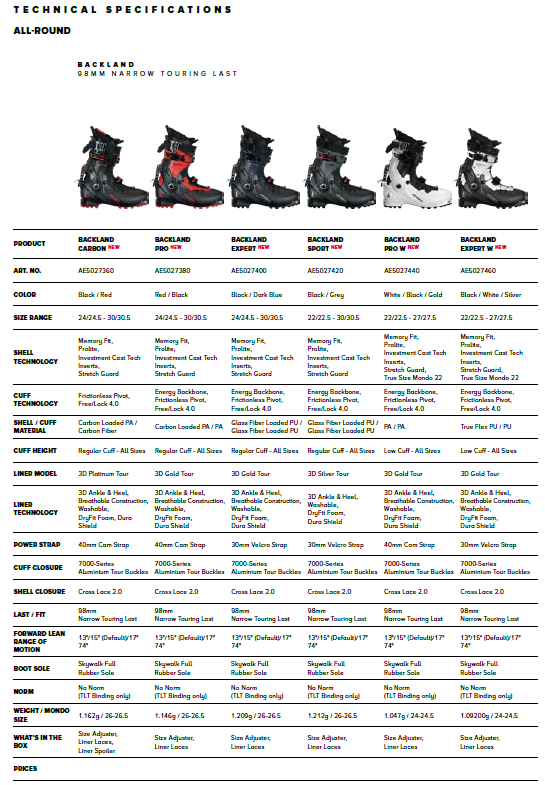
The Backland Series goes from Carbon > Pro > Expert > Sport. The distinctions between models are material type, liner type, and power strap type. It looks like all of the boots are built with the same molds and use the same notions (buckles, liner covers, ski/walk mechanism, pivot materials).
The Backland Series goes from Carbon > Pro > Expert > Sport. The distinctions between models are material type, liner type, and power strap type. All the boots appear to be built with the same molds and use the same notions (buckles, liner covers, ski/walk mechanism, pivot materials).
There is a complementary series to the Atomic-declared ‘ALL ROUND’ Backland series called the Backland UL series (called ‘FAST AND LIGHT’ in contrast). The Backland UL series differs by having a velcro cuff buckle, no power strap, a lighter liner, and a BOA shell closure system. I imagine this saves a bit of weight and money at the expense of durability and downhill performance. As a disclaimer, I haven’t seen any of the Backland UL series; this is strictly speculation from catalog browsing.

Backland Carbon UL ( left) / Backland Carbon (right).
Okay, what’s changed with the updated 22/23 Atomic Backland Carbon ?
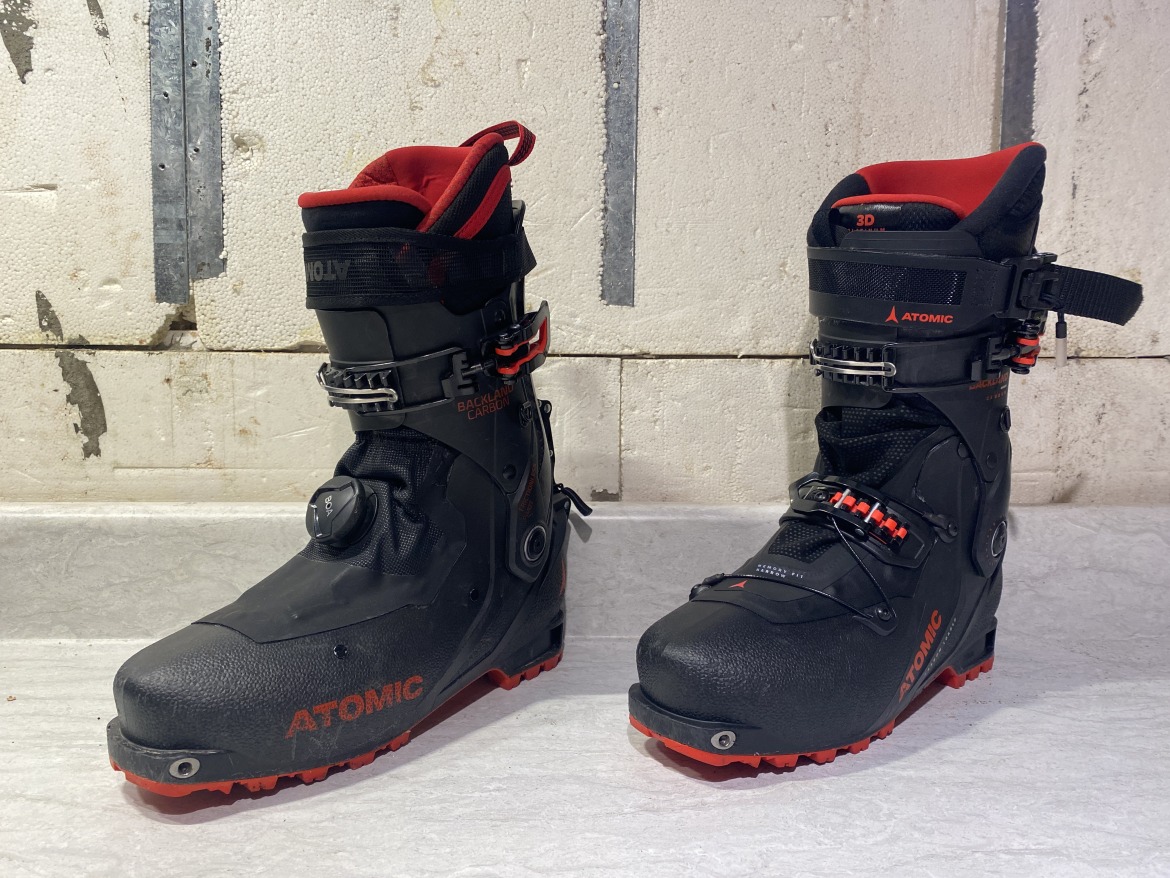
21/22 Backland Carbon (left) / 22/23 Backland Carbon (right).
Atomic replaces the BOA system with a buckle system : The new shell buckle system is called the Cross Lace 2.0. It has similarities to the 18/19 Atomic Backland Carbon (hence the 2.0 as an improvement on the past buckle design). I imagine the extra zig in the zig-zag cable pattern will provide a more uniform closure over the top of the shell. The move away from BOA has turned into a market bifurcation within the two-buckle boot world: some companies are sticking with the BOA (ex., the Salomon MTN Summit , the Scarpa F1 LT , and the Dynafit Blacklight ), while others are moving back to the buckle (ex. the Tecnica Zero G Peak and the Dalbello Quantum ), and the Skorpius CR II evolved from a buckle to the BOA. (The upside to all these closure systems is you’ve got options.) I look forward to comparing both the merits and drawbacks over this season.
New power strap : The new power strap is a minor, albeit helpful, improvement. The difference is there’s now a locking system on the cam strap buckle. The locking system allows the cam lock open or remain closed and makes threading the cam strap easier while putting on the boot. I’m curious if this added complexity will lead to more opportunities for something to break; for now, it’s convenient and a pleasure to operate.
New liner : The new 3D Platinum liner is made from Atomic’s proprietary Dry Fit Foam. Atomic advertises this foam as providing a phenomenal and longer-lasting fit that improves foot hold over previous Backland boots. Designwise, they moved the perforated red foam from the toe box to the heel and Achilles area. The red foam is designed to improve venting and reduce foot sweat. Maybe there were complaints of cold feet with the past liners having the perforated foam in the toe box? Also new is a more durable outer fabric that is placed on higher friction areas to improve the liner’s durability. Knowing liner rub is a pervasive problem across two-buckle boots, I’m excited to see this. In general, the liner feels high quality. Most ~1000g boots have a skimpy liner to save on weight. This liner feels substantially more plush – made with denser foam, a reinforced tongue and calf cuff, and a noticeably high construction quality.
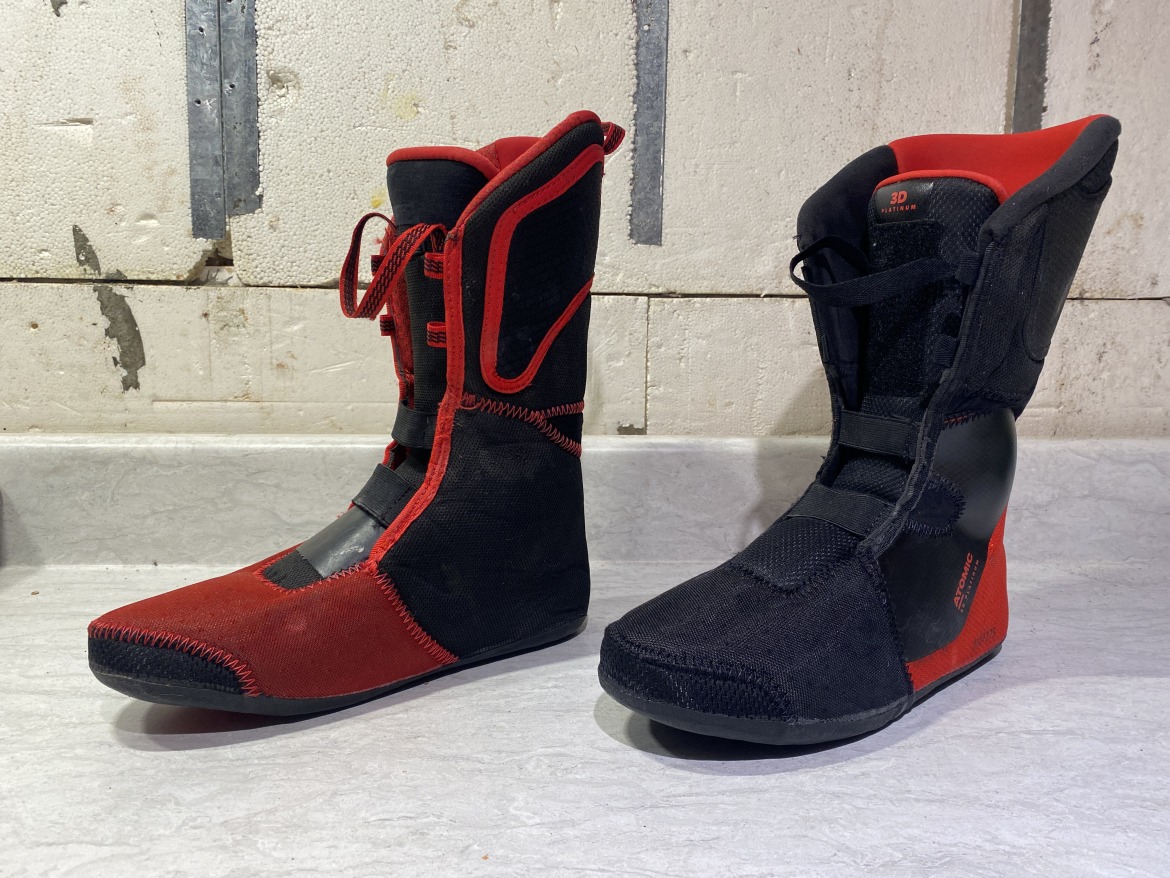
Old liner (left) / New liner (right).
New snow gaiter : The snow gaiter received an update too. The gaiter is a common failure point for most two-buckle boots. It’s difficult to bond fabric to plastic, and it’s in the high friction zone where the cuff articulates on the shell. The old snow gaiter has two magnets that attach the fabric to the liner. The new one has a velcro tab connecting to the liner’s tongue. More noticeably, the new gaiter reaches higher up the boot and doesn’t have a stitched seam in the center. I’m looking forward to testing the durability of the new snow gaiter this season.
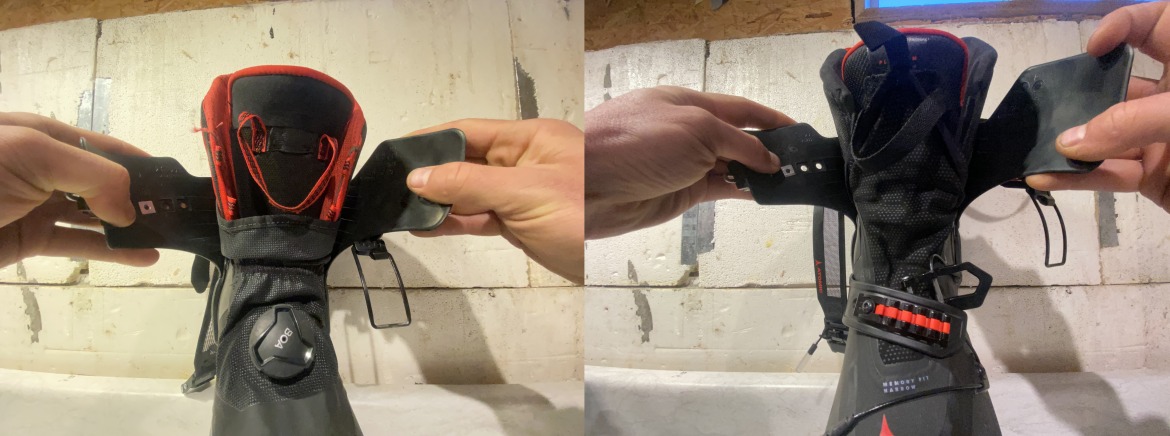
Old snow gaiter left / New snow gaiter right.
Aside from these changes, the 22/23 Backland Carbon looks similar to its aged brethren. Similar shell and cuff. Same great cuff buckle (one of the best in the category because of its large amount of travel for remaining buckled while in uphill mode without hindering range of motion). Similar outsole and ski/walk mechanism. I look forward to seeing how these design changes play out throughout the season. In particular, I’m thinking:
Will I miss the BOA?
Will I want to replace the liner for something more substantial in less than a season?
Will the snow gaiter hold up through the season?
As a preface to my description for the Backland Carbon’s fit, I’ll describe my foot as narrow and low-volume. The Scarpa Alien RS fit my foot shape great, but the volume was too high. The Salomon MTN Summit was an appropriate volume, but too wide in the toe box (as two related points of reference). With that in mind, the Atomic Backland Carbon feels narrow in the toe box and has an appropriate volume for my foot size / arch height.
The shell buckle provides more macro adjustment to the boot but lacks micro adjustment (the BOA system, in contrast, felt the opposite. It provided great micro adjustment but lacked a wider range of macro adjustment). The cuff is slightly too high volume for my calf and ankle. This surprised me because I have bigger than normal calves and ankles.
This is my first take on out-of-box boots. I’ll update later with a more informed opinion.
The First Impression
I went for my first tour with the Atomic Backland Carbon boots . Here are a few notes from the outing:
Uphill : -Smooth, low resistance range of motion
-Convenient power strap (with the updated locking mechanism)
-Great cuff buckle that allows me to avoid moving the buckle in between uphill and downhill mode without compromising the range of motion
Downhill : -Surprisingly progressive flex for a carbon fiber cuff
-Secure shell fit with shell buckle system
-Lower-than-I’d-like cuff height
-Strange off-axis cuff overlap
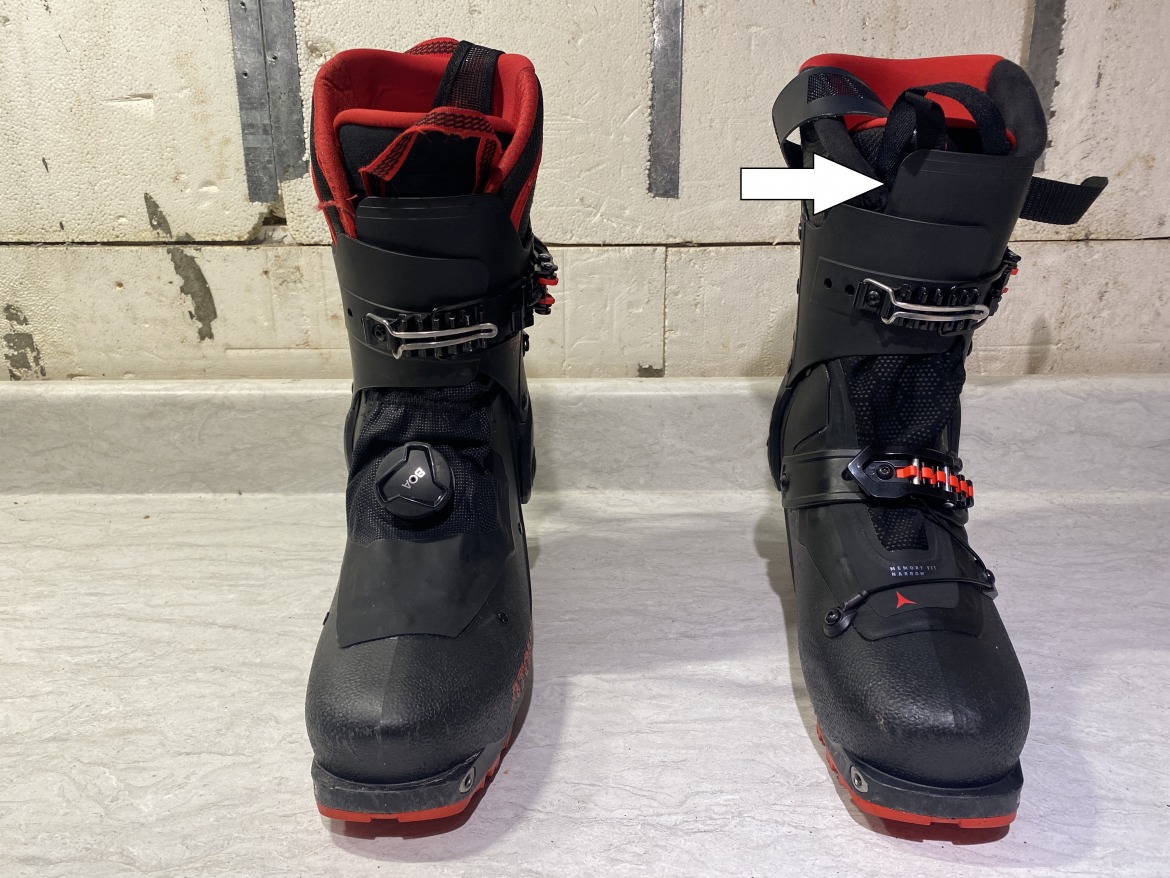
The white arrow points to the asymmetric cuff overlap. I’m not sure if this negatively or positively affects the performance of the boot.
Final Thoughts
What I like : -The boot has a narrow fit that feels comfortable but not spacious (think performance fit)
-The progressive flex is better than other carbon fiber two buckle boots that I’ve tried
-The shell buckle system is an improvement to the BOA for durability and fit.
-The liner feels nicer, more durable, and higher performance than the old Backland liner
-The color scheme screams Disney villain, which I’m into.
What I don’t like : -The liner tongue doesn’t sit well while the boot is in downhill mode. It will slide to one side or the other, which is noticeable while skiing. A velcro strap connecting the tongue to the rest of the liner could be an easy remedy for this issue.
-The cuff overlap sits asymmetrically on the shin. I don’t know if this helps or hurts downhill performance.
What I look forward to finding out : -How do the liner, snow gaiter, and hardware hold up over normal use in a season (general durability)?
-How would a few upgrades, like a thicker liner and wider power strap, add to the downhill performance of this boot?
The Basic Stats
Claimed weight : 1162g (size 26.5) Construction : Carbon cuff, shell is carbon infused polyamide Last : 98mm Forward lean : 13, 15, and 17 degree options Range of motion : 74 degrees Price : $799.95
Thanks for tuning it. Will check back later with more comprehensive opinions!
Shop for the Atomic Backland Carbon .
Slator Aplin lives in the San Juans. He enjoys time spent in the mountains, pastries paired with coffee, and adventures-gone-wrong. You can often find him outside Telluride’s local bakery — Baked in Telluride.
Scarpa F1 GT: A Review
On skiing alone.


IMAGES
VIDEO
COMMENTS
The Atomic Backland Tour binding represents, to our accomplished test team, the "state of the art." Ironically, there is literally nothing new in the technology employed. ... Weight of 2 bindings Multiple options are noted where we have tested multiple options. (in grams) 572. 770 with brakes: 732: 358. 492 with adjustment plate: 740: 2438 ...
The Atomic Backland Tour is a convenient and really lightweight tech binding for alpine touring. Like all Backland gear it's incredibly durable and easy to use: it features a patented step-in aid at the front so your boot is automatically positioned to click in. Then two climbing aids work separately from the heel tower, so with one easy ...
Atomic Backland Tour / Salomon MTN. 2020-2021 Salomon MTN Pure / Atomic Backland Pure. Release value range: "women", "men", & "expert" (adjusted by changing out U-spring in heel) ... The MTN / Backland Tour's brakes have a stated weight of 96 grams per brake, and work independently of the heel tower. They instead utilize a lever ...
Both the Atomic Backland Tour and ATK Raider 12 earn our highest award in great part due to their weight. We have scoured the market and have found no lighter binding with the feature set of the Backland. Step up in weight (about 100 grams heavier) to the Raider 12, and you get the same basic feature set, ...
The first thing I noticed when we measured the Atomic Backland is how light weight they are. Just picking up the skis from the shelf is astonishing. ... The Atomic Backland 86 SL, Blizzard Zero G 85 and Dynastar M-Tour 87 are very similar on the bending and torsional stiffness profiles.
The Atomic Backland Tour Alpine Touring Ski Bindings are super lightweight, easy-to-use tech bindings for fast and light touring. Weighing in at less that 400 grams a pop, they're some of the lightest brake equipped touring bindings on the market. The heel tower and its mounting plate are burly and provide good power transfer, and most of all ...
2021-2022 Atomic Backland 107. January 17, 2020 by Sam Shaheen. Ski: 2021-2022 Atomic Backland 107, 182 cm. Test Locations: Crested Butte & Berthoud Pass, CO. Days Skied: 10. Available Lengths: 175, 182, 189 cm. Blister's Measured Tip-to-Tail Length: 181.4 cm. Stated Weight per Ski: 1550 grams. Blister's Measured Weight per Ski: 1643 & 1663 ...
The Salomon MTN / Atomic Backland (same binding, different graphics and name) is a solid piece of kit. It has been available for quite a few years now and Salomon recently tweaked the design. ... where on the Shifts I find my brakes pop loose at least once a tour. ... The pros of these bindings (light weight, easy to use brakes, no pre-release ...
The ski of choice for Atomic freeride athletes like Izzy Lynch and Arianna Tricomi, the Atomic Backland 107 W delivers freeride touring performance in a wide, lightweight package. At 107mm underfoot this is Atomic's widest women's touring ski but the ski is weight optimized for easy ascending thanks to a full-length Carbon Backbone and ...
Atomic Backland 107, 182 cm (18/19-19/20) Measured Dimensions: 136.3-107.4-123.5 mm Stated Radius: 18.5 m Measured Weight per Ski: 1643 & 1663 g Measured Tip-to-Tail Profile: 56 mm / 5 mm / 19 mm Measured Length: 181.4 cm Measured Mount Point: -9.2 cm / 81.5 cm from tail ... Like the Wildcat Tour 108, the Vision 108 is a much better option ...
Holy stoppers: the Atomic Backland Tour binding with an innovative brake! Weighing in at a svelte 325g per side, this binding flaunts one of the highest feature-per-gram ratios we've seen. ... user-friendly binding that includes a lot-a-bit of everything for just a little-bit of weight. Three easily-swapped release-springs included: men's ...
The all-round Atomic Backland XTD 100 GW is a medium flex touring boot built for powering wider skis and maximizing ... washable, PVC free 3D Gold Tour liner provides a pre-formed, anatomical ankle and heel area for a precise and comfortable fit. A highly adaptive GripWalk Sole makes this boot compatible with all GripWalk, MN, MNC and Pin ...
First up on this tour-de-printemps: the Atomic Backland 100, in 180 cm length. This is a 20/21 item that was soft launched early this month. In the Backland 100, I was anticipating a light and versatile ski for big days. ... Between the low weight, minimal taper, and moderate side cut, the Backland 100 is an excellent ski for distant steep ...
1110 & 1114 Atomic Backland Carbon, 27.5 (19/20) 1167 & 1170 Atomic Backland Carbon, 27.5 ... blister-free fit on my foot and a reasonably light total weight, the 19/20 Backland Carbon is a joy to tour in. I've found the range of motion (ROM) to be more than adequate for anything I did in these boots, including long approaches, the occasional ...
The Atomic Backland 107 arrives as the well-rounded soft-snow-thrving staple we've come to know in the Backland lines of skis. This is a well-rounded ski that shines in powder and convinces you, too, that you can ski with confidence when the variable conditions are served up. Shop for the 22/23 Backland 107.
Riding style: Piste powder summit tour Length on the ski: 188 cm Riders weight: 90 kg Riders length: 185 cm. Translated by Google ・ Show original. Carlssone. ... About the ski: Atomic Backland 107 coming 2019/2020 season has the same spoon in the front as popular Bent Chetler skis ("HRZN Tech Tip" which will give 10% surface area on the tip ...
Featuring the same construction as the wider Backland 109, FreeTour Profile creates a touring ski with serious downhill power. A poplar and caruba Ultra Light Woodcore provides the ideal balance of low weight and optimum performance and the lightweight, three-dimensional HRZN 3D tip increases surface area for better float in deep snow conditions.
Blister's Measured Weight (size 26.5): Shells, no Liners: L: 1084 & R: 1085 g; ... Atomic Backland XTD Carbon 120: 1084 & 1085 + 290 & 286 = 1374 & 1371 g Dynafit Hoji Pro Tour ... the new Backland XTD will be lighter and tour far better than your current Hawx Ultra XTD, but it will be a wider fit. Honestly, it's more similar in purpose/fit ...
Atomic updated their Backland series of boots for the 22/23 season. I plan to test the Backland Carbon. ... I went for my first tour with the Atomic Backland Carbon boots. Here are a few notes from the outing: Uphill: ... Claimed weight: 1162g (size 26.5) Construction: Carbon cuff, shell is carbon infused polyamide